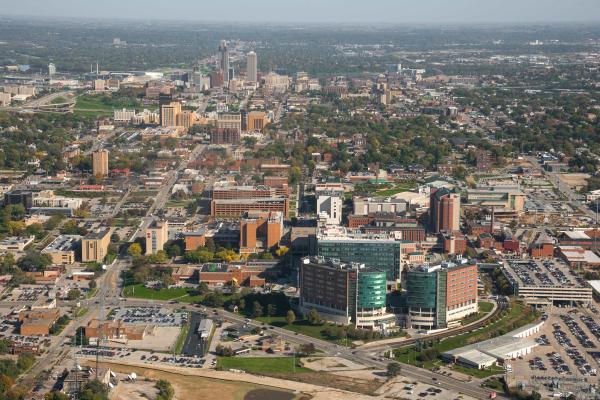OMAHA, Neb. — A transformation is coming. A construction project with implications that reach far beyond landscape for the city, state and even the country.
Nebraska Medicine and the University of Nebraska Medical Center (UNMC) leaders recently announced plans that call for the construction of a new, state-of-the-art facility on the northwest corner of the current medical center campus. A significant part of this project could open the door to opportunities for new local, state and federal partnerships which would further establish Nebraska Medical Center as one of the most elite academic medical centers in the world, capable of preparing for and treating the most complex diseases.
Specific costs will be established as plans officially take shape. Early estimates project millions of new square feet, a size and scope that is in line with other prominent medical center projects nationally.
The project, which is in such an early phase it currently doesn’t have an official name, could consist of several new buildings near the intersection of Saddle Creek Road and Farnam Street. Buildings in the complex could include one or more new towers for research and inpatient care, which would consolidate care in one location and replace older facilities, some of which are more than 70 years old. Strategic investments would also allow this facility to be a hub for expanding health science student enrollment, clinical trials, new educational technologies and truly be a resource for the state and region.
“We want the medical center to continue to be a prime mover in propelling Nebraska’s economy to new heights,” said Jeffrey P. Gold, MD, chancellor of UNMC and the University of Nebraska at Omaha. “This project will do just that. It will strengthen our position as a leading generator of new economic growth. We will educate and train even more health professionals from around the world and recruit faculty and staff who are stars who will then attract more federal funding, corporate investment and patients from around the globe.”
He added, “Building on the success of the Fred & Pamela Buffett Cancer Center and numerous other successful projects, it is projected that these new facilities will expand educational workforce development in the health professions, be the home for even more cutting edge high impact research and continue our long tradition of serious medicine and extraordinary care.”
The project will be a true public private partnership, funded through a collaboration between the local donor community, health system financing and partnerships with local, state and federal governments.
“Since the west Africa Ebola outbreak in 2014, Nebraska Medicine has led the world in bio preparedness efforts,” said James Linder, MD, CEO of Nebraska Medicine. “This new facility would be a quantum leap forward in that regard. So we’re not only advancing training, education, research and patient care, but we are also surging forward in the emerging fields of bio preparedness.”
UNMC/Nebraska Medicine has had an increasing role as a collaborator with federal civilian and military agencies. Following the Ebola crisis, UNMC/Nebraska Medicine became a co-leader of the National Ebola Training and Education Center (NETEC) and separately the home of the national HHS Training, Simulation and Quarantine Center. In addition, the US Air Force designated UNMC/Nebraska Medicine as one of its four Centers for Sustainment of Trauma and Readiness Skills (C-STARS) and the only one dedicated to specialized training for Air Force medical teams managing highly infectious disease threats.
“This type of public private investment is proven to work,” Dr. Linder continued. “This project will support new patient care delivery models that are not only more cost effective, but enable state-wide partnerships. This positions Nebraska as a hub of activity for knowledge-based companies and entrepreneurs. It will serve as a forerunner of future investments in Nebraska for decades to come.”
Architectural renderings and program specifics for the facility are not yet available.
The full content of this article is only available to paid subscribers. If you are an active subscriber, please log in. To subscribe, please click here: SUBSCRIBE







